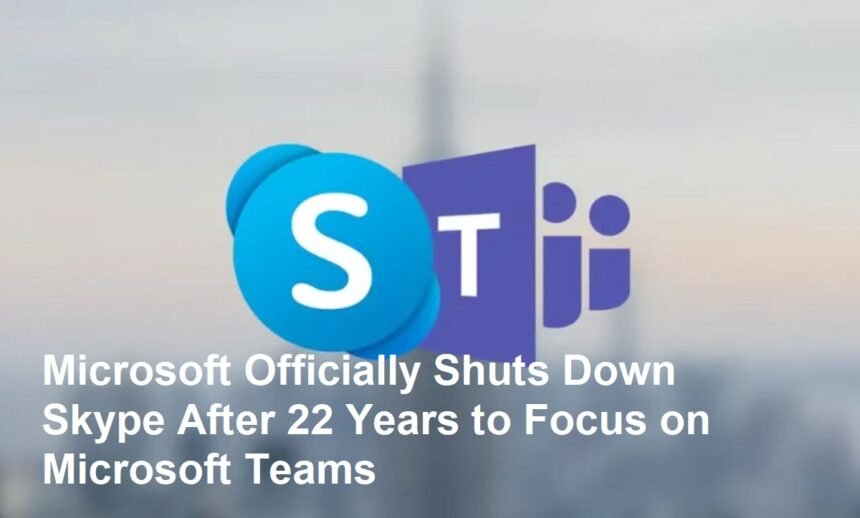After more than two decades of service, Microsoft has officially announced the closure of Skype, its once-popular communication platform. The decision marks the end of an era for Skype, which was launched in 2003 and quickly became a household name for video calls, voice chats, and instant messaging. Microsoft acquired Skype in 2011 and integrated it into its suite of communication tools. However, with the rise of newer platforms and changing user preferences, Microsoft has decided to retire Skype to concentrate its efforts on Microsoft Teams, its flagship collaboration and communication service.
The Rise and Evolution of Skype
Skype revolutionized online communication by enabling free voice and video calls over the internet, breaking down geographical barriers and connecting people worldwide. It became especially popular for personal use, business meetings, and international calls. Over the years, Skype expanded its features to include group video calls, screen sharing, and integration with other Microsoft products.
Despite its early success, Skype faced increasing competition from emerging platforms such as Zoom, Google Meet, and Slack, which offered more advanced features and better integration with modern workflows. Additionally, Microsoft itself developed Microsoft Teams, which combined chat, video conferencing, file sharing, and collaboration tools into a single platform tailored for business and educational environments.
Reasons Behind Skype’s Closure
Microsoft’s decision to shut down Skype is driven by the need to streamline its communication offerings and focus on a unified platform that meets the evolving demands of users. Microsoft Teams has seen rapid growth, especially during the COVID-19 pandemic, as remote work and virtual collaboration became essential.
By retiring Skype, Microsoft aims to:
- Consolidate Resources: Focus development, support, and innovation on Microsoft Teams rather than maintaining multiple overlapping platforms.
- Enhance User Experience: Provide a more integrated and seamless communication and collaboration experience through Teams.
- Meet Market Demand: Address the growing preference for comprehensive collaboration tools that combine messaging, video conferencing, and productivity features.
Transition Plan and User Impact
Microsoft has outlined a transition plan to help Skype users migrate to Microsoft Teams smoothly. Existing Skype users are encouraged to download and start using Teams, which offers similar functionalities along with additional features designed for modern communication needs.
Microsoft has assured users that data such as contacts and chat history can be transferred or accessed during the transition period. Support and resources are available to assist individuals and organizations in adapting to the new platform.
Microsoft Teams: The Future of Communication
Microsoft Teams has rapidly become one of the leading communication and collaboration platforms globally. It integrates with Microsoft 365 applications like Word, Excel, and PowerPoint, enabling users to collaborate on documents in real-time while communicating via chat or video calls.
Teams supports a wide range of use cases, from corporate meetings and project management to virtual classrooms and social gatherings. Its robust security features and scalability make it suitable for businesses of all sizes.
Reflections on Skype’s Legacy
While Skype’s closure marks the end of a significant chapter in digital communication history, its impact remains undeniable. Skype paved the way for internet-based voice and video communication, influencing the development of many modern platforms.
For millions of users worldwide, Skype was the first tool that connected them with loved ones across distances or enabled remote work and learning. Its legacy lives on through the technologies and ideas it inspired.
In summary, Microsoft’s official shutdown of Skype after 22 years reflects the company’s strategic shift to focus on Microsoft Teams as its primary communication and collaboration platform. This move aims to provide users with a more integrated, feature-rich experience suited to today’s digital communication needs.









